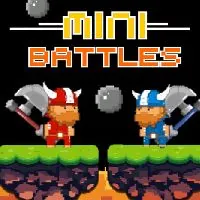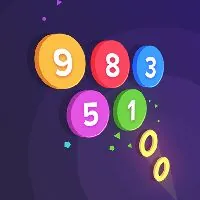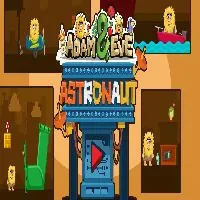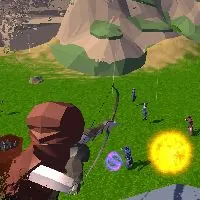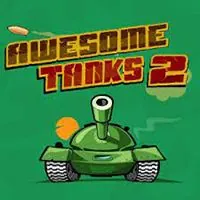B CUBED
SIMILAR GAMES
Description
B cubed - GitLab Games
About B cubed - GitLab Games
The world of software development and game creation frequently intersect, offering unique opportunities for innovation and collaboration. GitLab Games, a platform designed to leverage the power of the GitLab ecosystem, embodies this synergy. This project, known as B cubed, offers a unique playground for developers interested in exploring the intersection of coding, version control, and interactive experiences.
This document provides a comprehensive overview of B cubed - GitLab Games, exploring its core concepts, functionalities, and potential applications. We delve into how B cubed utilizes GitLab's features to streamline the game development lifecycle, fostering a collaborative and efficient environment for creators.
Understanding the Core Principles of B cubed
At its heart, B cubed is a demonstration of how version control and collaborative development principles can be adapted to game creation. It's built upon the foundation of GitLab, utilizing its repository management, issue tracking, and merge request capabilities to facilitate a smooth and organized workflow. The project emphasizes:
- Version Control: Tracking changes to game assets, code, and configurations is paramount. GitLab's repository features ensure that every modification is recorded, allowing developers to revert to previous states and maintain a clear history of the project's evolution.
- Collaboration: Game development is rarely a solo endeavor. B cubed facilitates collaboration by enabling multiple developers to work concurrently on different aspects of the game. This is achieved through merge requests, which provide a mechanism for integrating new code and assets into the main project.
- Issue Tracking: Identifying, reporting, and resolving bugs, feature requests, and other issues is streamlined through GitLab's integrated issue tracker. This promotes effective communication and ensures that all aspects of the game are addressed.
Key Features and Functionalities of B cubed
B cubed leverages various features within the GitLab environment to provide a rich and functional game development experience. Some of the crucial aspects include:
Repository Management and Code Versioning
The cornerstone of B cubed lies in its robust repository management system. This feature is instrumental in handling game development assets. Detailed code versioning ensures that every change to the game's source code is meticulously tracked, enabling developers to:
- Track Changes: Every line of code, every asset modification is recorded.
- Revert Changes: Easily step back to previous versions in case of errors or unwanted modifications.
- Branching and Merging: Developers can work on specific features or bug fixes in isolated branches, and merge them back into the main project when ready.
- Asset Management: Handles all types of game assets, including textures, models, audio, and scripts, promoting organized file handling.
Issue Tracking and Project Management
B cubed incorporates GitLab's issue tracking and project management tools to keep the development process organized and focused. This helps in:
- Bug Reporting: Bugs can be clearly documented and assigned to specific developers for resolution.
- Feature Requests: New feature ideas are documented and prioritized.
- Task Assignment: Tasks are assigned to developers and tracked through completion.
- Progress Monitoring: Project progress is monitored through issue status updates and progress bars.
Continuous Integration and Continuous Deployment (CI/CD) Pipelines
Although specifics vary based on the project's implementation, B cubed likely benefits from CI/CD pipelines. These pipelines automate critical steps in the development cycle, such as:
- Code Compilation: Automates code compilation to ensure compatibility.
- Automated Testing: Run tests every time new code is introduced to ensure stability.
- Deployment Automation: Automates the process of deployment, be it to a testing environment or directly to the end-user platform.
Benefits of Using GitLab for Game Development with B cubed
Employing GitLab, particularly through B cubed, provides a plethora of advantages for game developers and teams. These include:
- Enhanced Collaboration: Fosters teamwork through version control, issue tracking, and merge requests.
- Improved Organization: Maintains a structured project environment, making it easier to manage code, assets, and tasks.
- Increased Efficiency: Streamlines the development process, saving time and reducing errors.
- Better Version Control: Guarantees a complete history of changes, simplifying debugging and rollbacks.
- Simplified Project Management: GitLab's tools help effectively plan, execute, and track project progress.
Exploring the Game Development Process with B cubed
The creation of games using B cubed follows a structured process, leveraging the features offered by GitLab.
Setting Up the Project
The process begins with creating a new GitLab repository for the game. This serves as the central hub for all project files, code, and assets. Developers then clone the repository to their local machines, allowing them to make changes to the project.
Developing and Testing Code
Developers work on specific features or bug fixes within dedicated branches, ensuring the stability of the main code. As changes are made, they're committed to the branch and tested thoroughly.
Submitting Merge Requests
Once a feature or bug fix is complete and tested, developers submit a merge request to integrate their changes into the main branch. This request undergoes code review by other team members.
Code Review and Merging
Team members review the submitted code, providing feedback and suggesting improvements. Once approved, the code is merged into the main project branch. This is a crucial step in maintaining code quality and consistency.
Deployment and Iteration
After the merge, the game is deployed, either to a testing environment for internal testing or to a live environment for players. The development process is iterative, with frequent updates, bug fixes, and new features being added based on feedback and requirements.
Use Cases and Applications of B cubed
B cubed's versatility extends to various game development scenarios, making it suitable for a wide range of projects. Some of the major applications are:
- Independent Game Development: Provides tools for solo developers or small teams to manage their projects.
- Educational Purposes: Allows students and learners to understand the importance of version control and collaboration.
- Game Jams: Provides an efficient platform for teams to work together during time-constrained game development competitions.
- Open Source Game Projects: Makes collaboration easier and more accessible for open-source game projects.
Conclusion
B cubed - GitLab Games exemplifies how the synergy between software development practices and game creation can revolutionize the development cycle. By harnessing the power of GitLab's features, the project fosters collaboration, version control, and efficient project management. Whether it is for independent game developers or for educational purposes, B cubed offers a robust and accessible platform for bringing game ideas to life. By carefully considering the principles and practices detailed here, developers are well-equipped to utilize the advantages of the project, and to explore the exciting world of game development powered by GitLab.
B cubed - GitLab Games
About B cubed - GitLab Games
We are delighted to present a comprehensive exploration of the innovative concepts and applications that define B cubed within the dynamic landscape of GitLab Games. Our understanding and application of these principles are designed to not only illuminate the core functionalities but also to push the boundaries of what is possible in collaborative development and competitive digital experiences. This document aims to provide an unparalleled depth of insight, offering a detailed perspective that sets a new standard for understanding and engaging with the B cubed framework as it intersects with the GitLab Games platform.
Understanding the Core of B cubed in GitLab Games
At its heart, B cubed represents a foundational approach to building, managing, and iterating on projects. When we consider this within the context of GitLab Games, we are looking at a powerful synergy. The 'B's can be interpreted in several crucial ways, each contributing to a robust and efficient development cycle. Firstly, Build signifies the creation and construction of game assets, code, and environments. This is where raw ideas are transformed into tangible components. Secondly, Bridge highlights the critical connections and integrations necessary for seamless operation. In GitLab Games, this translates to the ways different modules, features, and even external services communicate and interoperate. Finally, Benchmark refers to the continuous process of evaluation and performance measurement. This ensures that the games developed on GitLab are not only functional but also optimized, engaging, and competitive. Together, these three pillars form a robust methodology for game development.
The Build Phase: Crafting Digital Worlds with GitLab
The Build phase is where the magic of game creation truly begins. Within the GitLab Games ecosystem, this phase is profoundly enhanced by GitLab’s robust version control and CI/CD pipelines. Developers can meticulously build individual game elements, from intricate 3D models and captivating character designs to sophisticated game mechanics and intuitive user interfaces. GitLab’s infrastructure provides a centralized repository for all assets, ensuring that every iteration and modification is tracked. This meticulous versioning is paramount for maintaining project integrity and facilitating collaborative efforts. Furthermore, the build process itself can be automated through GitLab CI, allowing for rapid and consistent compilation of game code and assets. This means that as soon as changes are committed, the system can automatically compile and prepare the game for testing, significantly accelerating the development timeline. Imagine developing complex game logic, intricate AI behaviors, or stunning visual effects; each of these components undergoes a rigorous build process, all managed and orchestrated through the power of GitLab.
Version Control and Asset Management
The foundation of a successful build lies in superior version control. GitLab’s Git-based system allows for granular tracking of every change, enabling developers to revert to previous states, merge disparate lines of development, and maintain a clear history of the project. This is not just about code; it extends to all game assets. Whether it’s a sprite, a sound effect, or a level design file, GitLab ensures that each version is stored and accessible. This prevents data loss and simplifies the process of resolving conflicts when multiple team members are working on the same project simultaneously. The ability to branch and merge independently allows for experimental development without jeopardizing the stable core of the game. This structured approach to building ensures that the development process is organized, efficient, and less prone to errors.
Automated Builds and Continuous Integration
The integration of Continuous Integration (CI) into the build process within GitLab Games revolutionizes how games are developed. GitLab CI/CD pipelines can be configured to automatically trigger a build whenever new code or assets are pushed to the repository. This means that the game is constantly being compiled and tested in a consistent environment, catching integration issues early in the development cycle. This automation reduces the manual overhead associated with the build process, freeing up developers to focus on more creative and complex tasks. The ability to set up complex build scripts, including dependency management and cross-platform compilation, is a testament to the power of GitLab’s CI capabilities in facilitating a streamlined build workflow. This continuous cycle of building and testing is fundamental to achieving high-quality game development.
The Bridge Phase: Connecting the Elements of Play
The Bridge phase is where the disparate elements created during the build phase are brought together to form a cohesive and functional whole. In the context of GitLab Games, this involves establishing seamless communication and integration between various game systems, services, and potentially even external platforms. This is about creating the pathways that allow the game to operate smoothly, ensuring that players have an uninterrupted and engaging experience. This phase is critical for multiplayer functionality, in-game purchases, social features, and API integrations. Without a strong bridge, even the most beautifully build components will struggle to function as a unified entity. We focus on creating robust APIs, efficient data transfer protocols, and secure authentication mechanisms to ensure that these connections are reliable and performant. The goal is to bridge any gaps between different development efforts and to connect the game world to the player's experience.
Multiplayer Networking and Server Infrastructure
A significant aspect of the Bridge phase in game development, particularly for competitive titles within GitLab Games, is the implementation of robust multiplayer networking. This involves establishing reliable connections between players and game servers. We design and implement networking layers that minimize latency, handle packet loss gracefully, and ensure synchronization across all connected clients. This includes choosing appropriate networking paradigms, such as client-server or peer-to-peer architectures, and optimizing them for the specific needs of the game. The bridge here is literally the connection that allows players to interact in real-time. Furthermore, the deployment and management of server infrastructure, often integrated with CI/CD pipelines, is crucial. This ensures that the game servers are scalable, available, and performant, providing a stable environment for online play.
API Integrations and External Services
The ability to bridge with external services opens up a world of possibilities for GitLab Games. This can include integrating with social media platforms for sharing achievements, connecting to payment gateways for in-game transactions, or leveraging cloud services for data storage and analytics. We meticulously design and implement APIs that allow these disparate systems to communicate effectively. This ensures that features such as leaderboards, user profiles, and in-game economies function seamlessly. The bridge established through these integrations enhances the overall player experience and expands the reach and capabilities of the game. Secure and efficient data exchange is paramount to maintaining the integrity and functionality of these connections.
Inter-Module Communication and Feature Integration
Within a complex game, numerous modules and features must interact harmoniously. The Bridge phase is dedicated to ensuring that these internal components communicate effectively. This includes everything from how the player input system communicates with the character controller, how the physics engine interacts with the animation system, and how the UI displays information from the game state. We architect the game systems to facilitate clear and efficient inter-module communication. This often involves designing well-defined interfaces and adhering to robust architectural patterns. The successful bridging of these internal systems is what transforms a collection of individual features into a cohesive and playable game. This is where the build components truly come alive as a unified experience.
The Benchmark Phase: Measuring Success and Optimizing Performance
The Benchmark phase is indispensable for ensuring that the games developed under the B cubed methodology are not only functional and well-connected but also performant, engaging, and ultimately successful. This phase involves rigorous testing, performance profiling, and the establishment of clear metrics against which the game’s success is measured. It’s about understanding how the game performs under various conditions and identifying areas for improvement. For GitLab Games, this translates to creating games that are competitive, enjoyable, and technically sound. We believe that continuous benchmarking is key to achieving excellence and delivering a polished player experience. This phase is not a one-time event but an ongoing process throughout the game’s lifecycle.
Performance Profiling and Optimization
Performance profiling is a cornerstone of the Benchmark phase. We utilize advanced tools to analyze the game’s performance, identifying bottlenecks in CPU usage, memory allocation, and rendering. This detailed analysis allows us to pinpoint areas where optimization is most needed. Whether it’s optimizing rendering pipelines for smoother frame rates, refining algorithms for faster processing, or reducing memory footprints for better stability, the goal is to benchmark and improve every aspect of the game’s technical performance. This ensures that the game runs efficiently on a wide range of hardware, providing a consistently high-quality experience for all players. The benchmark data collected here directly informs the optimization efforts.
Player Experience and Engagement Metrics
Beyond technical performance, benchmarking also encompasses the player experience. We gather and analyze metrics related to player engagement, retention, and satisfaction. This can include tracking player progression, identifying points where players tend to drop off, and understanding which game features are most popular. By setting clear benchmarks for these engagement metrics, we can assess the game’s overall success and identify areas where the design or gameplay might need adjustments. User feedback is a crucial component of this benchmarking process, providing invaluable qualitative insights that complement the quantitative data. The ultimate benchmark is a happy and engaged player base.
Competitive Analysis and Iterative Improvement
In the competitive landscape of GitLab Games, understanding where the game stands in relation to its peers is vital. The Benchmark phase includes competitive analysis, where we evaluate the game against similar titles in terms of gameplay, features, and overall player reception. This analysis helps us to identify industry best practices and potential areas for differentiation. The insights gained from benchmarking and competitive analysis fuel an iterative improvement process. We use this data to refine existing features, introduce new ones, and continuously enhance the game. This cyclical approach of building, bridging, benchmarking, and iterating ensures that the game remains relevant, engaging, and at the forefront of the gaming experience.
The Synergistic Power of B cubed in GitLab Games
The true power of B cubed within GitLab Games lies in the seamless integration and synergy of its three core components: Build, Bridge, and Benchmark. These are not isolated stages but rather interconnected elements that feed into each other, creating a dynamic and efficient development lifecycle. A robust build process provides the stable foundations upon which strong bridges can be constructed. These bridges, in turn, enable the collection of crucial data for effective benchmarking. The insights gained from benchmarking then inform and refine the subsequent build and bridge efforts, leading to continuous improvement and innovation. This holistic approach ensures that every game developed on GitLab Games is not only technically sound but also highly engaging and competitive. We are committed to leveraging this powerful framework to push the boundaries of what is achievable in game development.
Fostering Collaboration and Efficiency
The B cubed methodology, when applied within the collaborative environment of GitLab Games, significantly enhances team efficiency and fosters a culture of shared success. The clear delineation of the build, bridge, and benchmark phases provides a structured roadmap for development. This structure, combined with GitLab’s powerful collaboration tools, ensures that teams can work together effectively, regardless of their geographical location. Clear responsibilities and well-defined goals at each stage minimize confusion and accelerate progress. The ability to continuously build, bridge, and benchmark means that teams can adapt quickly to changing requirements and maintain momentum throughout the development process.
Driving Innovation and Quality
By systematically addressing build, bridge, and benchmark aspects, we are able to drive significant innovation and uphold the highest standards of quality in GitLab Games. The focus on meticulous building ensures that the foundational elements are solid. The emphasis on bridging encourages creative problem-solving in integrating diverse systems. The commitment to benchmarking pushes for constant optimization and player-centric improvements. This integrated approach allows us to explore new possibilities, refine existing mechanics, and ultimately deliver games that are both technologically advanced and deeply enjoyable. The B cubed framework is our commitment to excellence in every facet of game creation.
Play B cubed for free on GitLab Games, where we offer a dynamic platform featuring thousands of the best unblocked games online. Our extensive library ensures pure enjoyment with an ad-free experience, keeping you immersed in the action without distractions. Accessible from school, work, or home, our Gitlab games deliver seamless fun anywhere you are. We’ve streamlined the experience—play effortlessly with your keyboard or a simple click, tailored to how you like to game. Dive into our collection of unblocked games, including popular categories like unblocked games 66, unblocked games wtf and cool math games Gitlab, and enjoy entertainment that’s always within reach and endlessly captivating.
